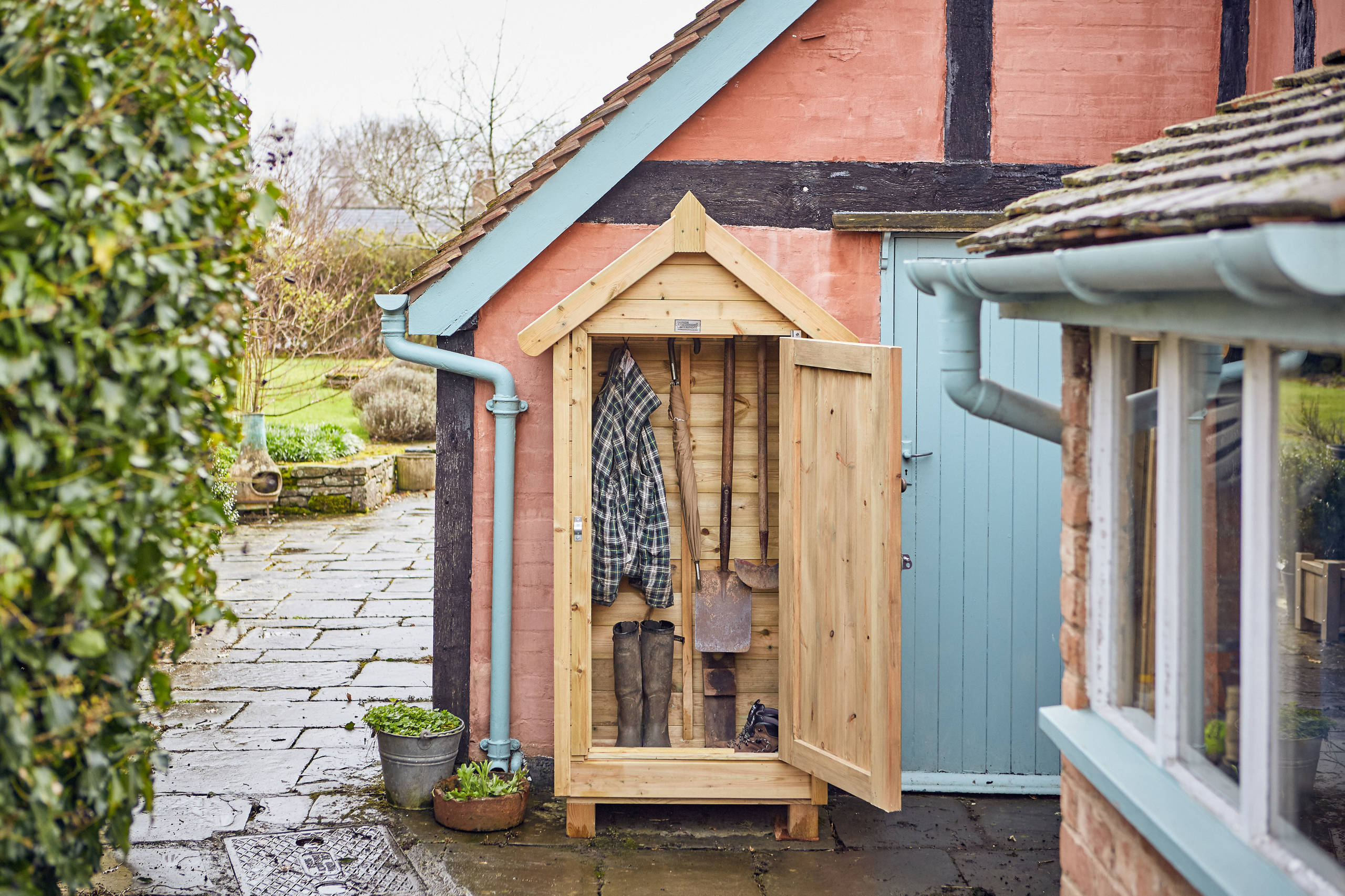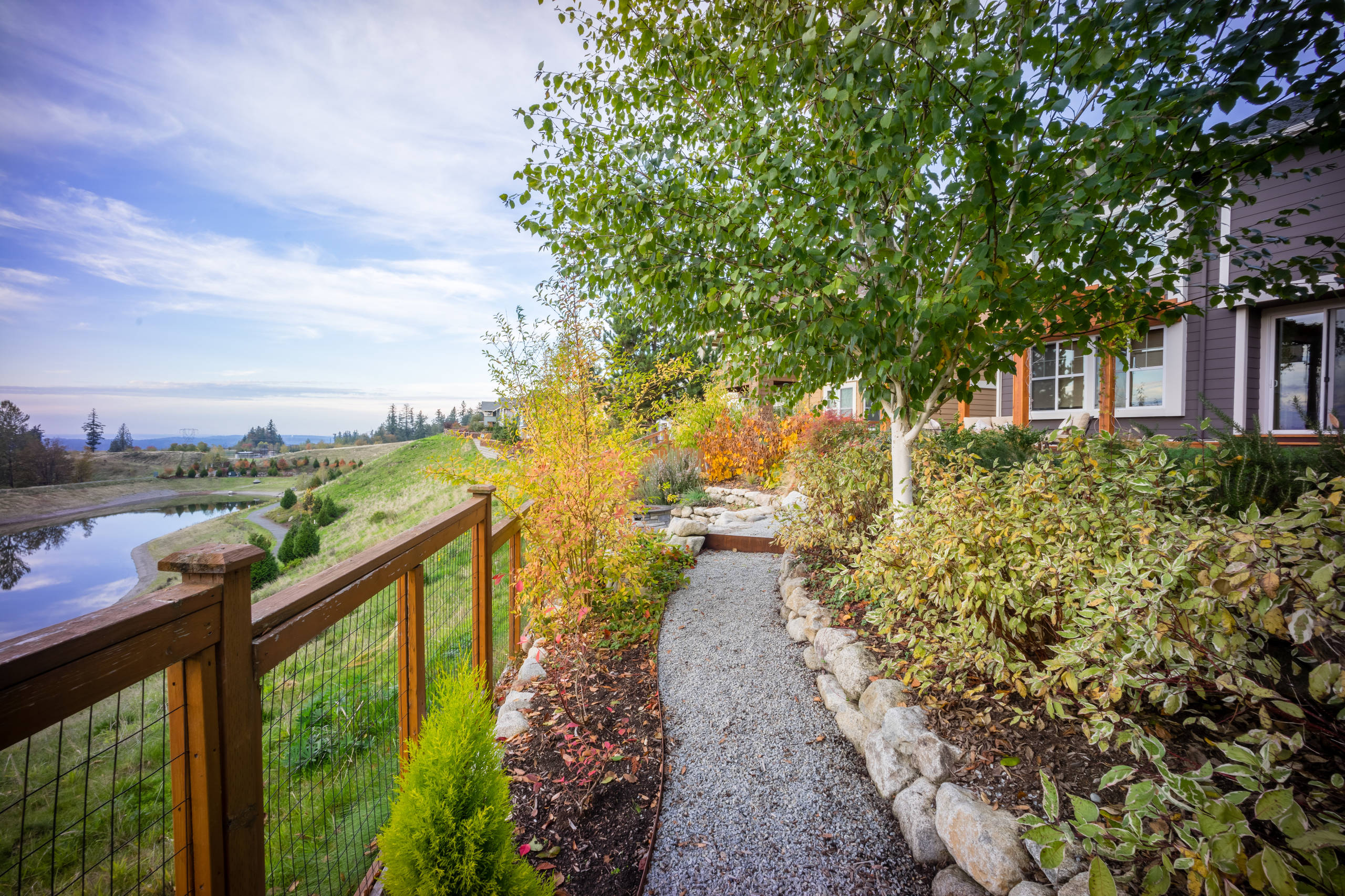Some of these are fairly simple. Others might take more time and require help from professionals. If you’re looking at building projects, check first with local pros about availability and timelines, especially if cold weather will curtail further progress. You’ll also need to check local regulations and requirements for required permits, as they can vary widely for even small projects.
 The Alter Architect’s Studio, PLLC
The Alter Architect’s Studio, PLLC AAA Landscaping LLC
AAA Landscaping LLCWildlife experts say landscape lighting, especially lights that are on throughout the night, adversely affect nocturnal animals and migratory birds. You can help prevent this by using recommended fixtures for wildlife friendliness and by carefully designing your lighting scheme.
 Jay Sifford Garden Design
Jay Sifford Garden DesignSitting in front of a cheerful fire is a cozy way to spend a winter evening. Heading outside to collect wood from a haphazard pile isn’t as much fun. Make sure your firewood is readily accessible, dry and protected from the weather by adding a storage shed or alcove designed for that purpose that also adds a stylish element to your yard.
 Form Collective
Form CollectiveYou’ll also need to provide plenty of air circulation around and under the wood to keep out moisture and prevent mold. Finally, try to keep your stack no more than 4 feet tall. It makes it much easier to access. There also may be local regulations about where you can store firewood, especially around homes. These can be fairly strict in areas where wildfires are common.

If your garden equipment comes into your garage during the winter, consider reclaiming that space by adding a garden shed or storage area outside. Ready-to-install kits are easily available, and most don’t require too much work to put in place if you have a good base ready to go.
The shed seen here is a good choice for rakes, shovels and small tools, and it also fits well into the landscape. A shed that’s tall but not necessarily wide can hold pots, potting soils, tools and possibly a lawn mower. Nestle it into a corner of the yard or set it against a little-used side of the house or garage.
 earth and sole
earth and sole Edward Caruso Photography
Edward Caruso PhotographyCheck out the possibilities for adding a bench with storage to your patio and deck. Make sure it’s waterproof, then use the storage space for outdoor cushions and pillows. The cushions won’t be taking up valuable garage space, and come spring, you’ll have another seating spot in your yard.
 Nice Planter
Nice Planter Juxtapose Design Build
Juxtapose Design BuildAdd easily navigated paths to bird feeders, winter planting beds and greenhouses that otherwise would be challenging to access in bad weather. A simple gravel or decomposed granite pathway can add much-needed stability yet can be altered or even removed fairly easily if you decide it isn’t working for you or your yard’s look.
Another option would be to add sections of premade wooden boardwalks. These can easily be laid down for winter and removed in the spring months.
 Inside Out Design, LLC
Inside Out Design, LLC Hortulus Animae llc – Mindful Garden Design
Hortulus Animae llc – Mindful Garden DesignSurvey your fences and gates for signs of weakness or damage. You’ll want to make any repairs before inclement weather makes the problem worse. Some repairs may be fairly simple, such as replacing a lock or a single board or adding a fresh coat of stain or paint.
If you’re looking at more damage, check with local professionals about the recommended repairs, including a timeline and their availability. Even if it’s not possible to do more than patchwork repairs, you’ll be ready for any major repairs once the weather allows. In the meantime, you can decide what you want for a replacement, if needed.
 Nicole Forina Home
Nicole Forina HomeExtend your time outdoors with a fire pit or fire table. Portable gas-fueled options rely on a propane take as a fuel source. Gas models will be smokeless, cleaner-burning and easier to start and turn off. The main requirement will be a stable surface, nearby seating and maybe an additional warm blanket or two for a cozy feel.
 KTG Design
KTG DesignAny fire feature requires extra safety precautions. Start by checking local regulations and possible permit requirements. These may include restrictions on locations, types of fuel and days of use.
An open flame and wood or wood composites are a worrisome combination, so add a fire mat or take other precautions if using a fire pit on a deck.
 Treeline Construction
Treeline ConstructionA classic greenhouse with a brick or stone base, glass panels and maybe some filigrees on top is a project that will take some time and might not be ready by winter. But if you’re looking for a more low-key spot to start seeds and overwinter delicate plants, check with a builder about adding a simple greenhouse that can get you started.
Another option is a more easily assembled greenhouse kit. These now come in a variety of styles and design options and can be easily assembled. And while you may need added heat sources if your winters are very cold, even without those they can be a useful spot for starting seeds and nurturing seedlings in early spring.
 Homefront Farmers
Homefront Farmers

Fewer daylight hours mean you, your family and your guests may be coming and going in the dark. Fall is a good time to make any outdoor lighting upgrades needed to ensure your walkways and entryways will be safely lit during the winter months. Places to check include paths, especially those leading to the front door; along steps and stairs; on decks and patios; and around any entries.